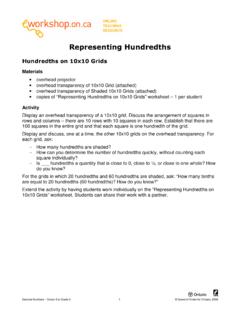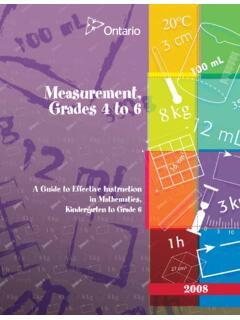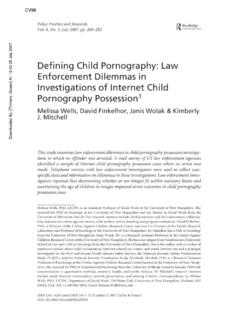Transcription of Critical Literacy – The Four Roles of the Reader
1 Shared Reading page 1 queen 's Printer for Ontario, 2005 Critical Literacy The four Roles of the Reader One way of looking at Critical Literacy is through the four Resources model, developed by Luke and Freebody in 1990. They developed four basic Roles for readers in today s society. Effective readers go beyond breaking the code and making meaning to evaluating how well the author and /or illustrator achieved their purpose. Code Breaker Code breakers use what they know about the alphabetic principle, sight vocabulary, and conventions of print to decipher texts. To support Code Breaker skills: promote development of phonological and phonemic awareness develop letter recognition and sound to letter correspondence expand sight vocabulary through a word wall, letter manipulation, games such as Snap or Fish, etc.
2 Develop knowledge of onset and rimes Meaning Maker Meaning makers read to understand. They integrate knowledge from the illustrations: visual features such as graphs, labels, or headings; background knowledge, etc. They think beyond what is explicitly stated in the text to what is implied. They look for clues provided by the author or illustrator that lead to understanding the text at a different level of comprehension. To support meaning maker skills: pose questions that address o literal interpretation o inferential interpretation discuss a story from a different point of view before reading a story, access and/or build prior knowledge Text User A text user has an understanding of genre and uses this knowledge to approach a text appropriately. They expect, for example, to read fictional narratives for an understanding of character and plot development, and, most importantly, for enjoyment.
3 They understand that factual texts would focus on information and would likely contain specific text features to help the Reader see ideas more clearly. Shared Reading page 2 queen 's Printer for Ontario, 2005 To support text user skills: read aloud from a range of genres so students see this as an authentic form of independent reading use shared texts from a range of genres to explicitly teach students how to approach and interpret the information contained in these texts encourage students to write in a range of genres based on the purpose of the writing ensure students have access to a wide range of fiction and factual texts for independent reading Text Critic A text critic learns to evaluate a text to determine the author s purpose and the conscious decisions the author made to include or exclude certain information.
4 They consider point of view, as well as social and cultural fairness or bias. Text critics also consider how well the author achieved their purpose and how they might have written in a different way. To support text critic skills: choose texts carefully and engage students in discussions that lead to the development of these skills discuss the author in a way that may lead to realizing their point of view or biases encourage students to criticize their own writing and determine whether or not their texts meet their objectives










